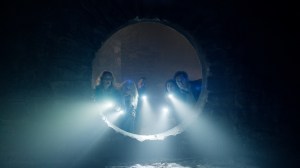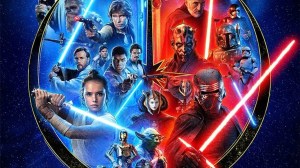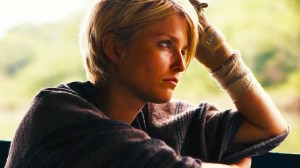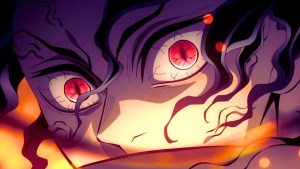The Jurassic Park franchise has an interesting relationship with real-life science, and the Jurassic World sequels have a completely different one. Both installments aim to present a spectacle that is plausible, but not necessarily paleontologically accurate. Here, we’ll take a look at the 10 most hype-worthy dinosaurs in the trilogy and what scientists have said about them.
Videos by ComicBook.com
Both Jurassic Park and Jurassic World take pains to explain where their concepts diverge from real science — though admittedly, these aren’t the most memorable moments of the film. In the case of Jurassic Park, Dr. Wu (B.D. Wong) tells us that the cloned dinosaur DNA was supplemented with DNA from contemporary animals, including frogs and reptiles. The movie makes sure to note that the dinosaurs may have had more feathers than we see in the park, and that the park’s team had set out to create a spectacle as much as a scientific display.
[RELATED: Latest Updates on the Next Film, Jurassic World Rebirth]
Jurassic World takes this jaded attitude toward scientific accuracy much further, with the park’s scientists now designing creatures out of whole cloth to please the audience rather than trying to reconstruct any real historical lifeforms. Wong’s Dr. Wu even returns to deliver the devastating line: “You didn’t ask for reality, you asked for more teeth.” This worked well in many ways, and hopefully, it was woven into the plot well enough to avoid confusing viewers as much as possible. Still, there are some big misrepresentations in these movies, as you’ll see below.
I’ll be ranking the dinosaurs by spectacle and story utility here, and only commenting on their scientific accuracy along the way. Obviously, many of the key monsters in these movies were fictional; still, it will be interesting to see what kind of instincts they lean on in the upcoming Jurassic World Rebirth, where they struggle for a place in a limited habitat. That movie hits theaters on July 2nd, 2025. In the meantime, here are the top 10 dinos in the Jurassic World series so far.
10) Tyrannosaurus Rex
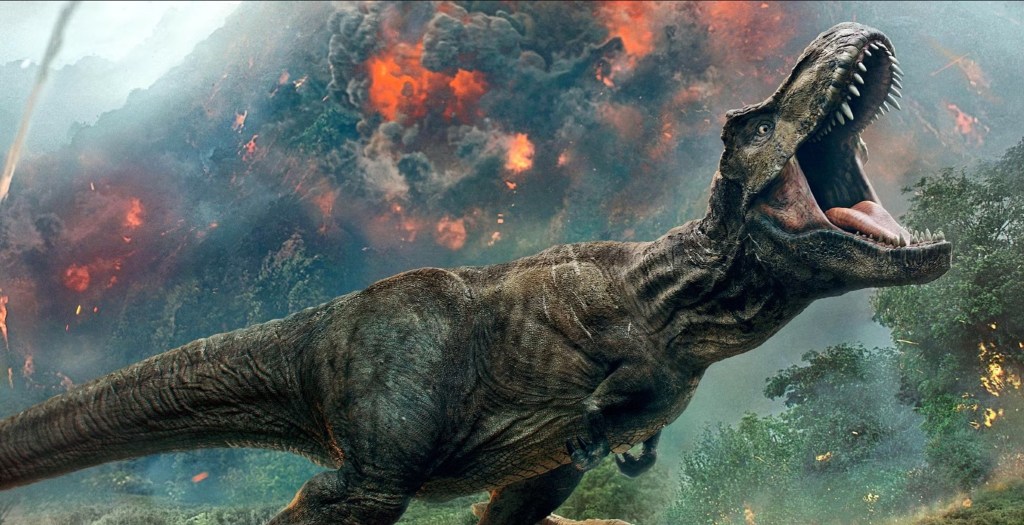
It would feel wrong to leave the T-rex off of any list about the Jurassic franchise’s best creatures – but in the case of Jurassic World, it would feel wrong to rank it any higher than this either. The largest and most terrifying beast from the first trilogy is trotted out here mostly for nostalgia, and its actions often don’t make sense. A few times, it feels like it was shoehorned into the plot to check a box, and its odd pose at the end of Fallen Kingdom is laughable.
In terms of accuracy, this is probably the dinosaur whose depiction has been analyzed and dissected the most over the years. World essentially sticks to the T-rex design we saw in Park, so its inaccuracies have been well-documented over the years. Scientists generally agree that the real creature had even shorter arms than seen in the movie, and it’s body likely had more color with some light feathering on its back. It also had impeccable eyesight, despite the iconic line that “its vision is based on movement.”
9) Indominus Rex

The Indominus Rex is the first dinosaur we meet in Jurassic World that has been genetically designed for its audience rather than cloned from a real historical monster. This gives it some social issues along with some outrageous abilities, including a chameleon-like power to change color and blend in with its surroundings, despite its enormous size.
Among all the designer dinos in this trilogy, Indominus may get the most interesting part to play in the story. It’s unsurprising that scientists looking to create an attraction would combine the size and strength of a T-rex with the cunning of a velociraptor, and it’s equally unsurprising that the resulting creature would feel lonely and frustrated without a pack. This seemed a lot more interesting than the later Indoraptor, and it probably should have taken the place of the Gigantosaurus in Dominion.
8) Quetzalcoatlus
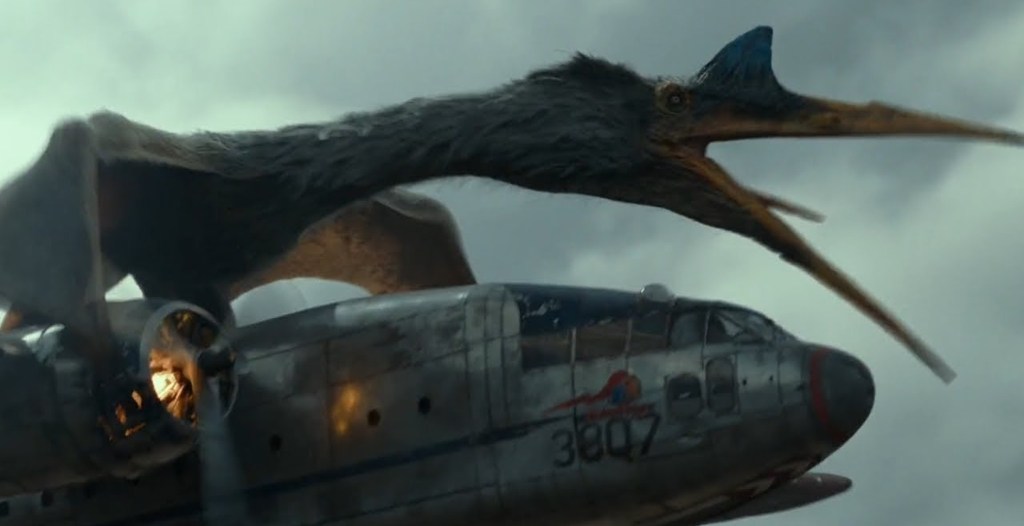
The World trilogy definitely gave its flying dinosaurs plenty of time to shine, and quetzalcoatlus may have had the most shocking scene of all when it attacked a Kayla Watts’ plane, showing its immense size clearly. This left Kayla and Owen stranded inside BioSyn’s dinosaur sanctuary with no protection. It’s a pivotal moment not just for the plot, but the worldbuilding — humanity can no longer assume it has uncontested control of the skies.
It’s hard to say if this quetzalcoatlus was accurate without a better idea of the size of Kayla’s plane. This may be a case of the filmmakers leaning on outdated science to create a better spectacle, since paleontologists ones believed quetzalcoatlus’ wingspan could be up to 85 feet. These days, they believe it was more likely around 36 feet.
7) Pachycephalosaurus
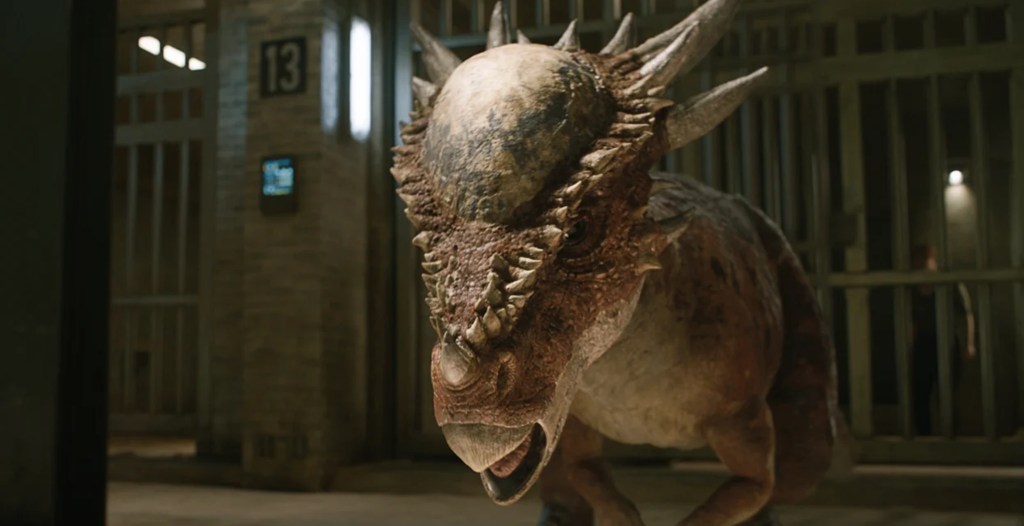
The pachycephalosaurus, or stygimoloch is the hard-headed dinosaur that uses its armored skull to break itself out of containment at the climax of Fallen Kingdom, letting Owen, Claire and Maisie out in the process. This is a fun moment that gets all the screentime it deserves, even though fans have already seen a pachycephalosaurus pretty prominently in Jurassic Park III. Owen’s ability to incite the dino with a whistle may make his raptor-training more believable or less believable, depending on who you ask.
The accuracy of this depiction is actually being questioned in the paleontology world right now. Scientists have long believed that the creature’s skull was used for intra-species combat, the same way modern bighorn sheep clash today. However, over the last two decades researchers have used new technologies like CT scans to analyze these thick skulls and propose alternatives — that their headbutts were used to herd pray, push rivals aside or perhaps knock fruit loose from tall trees, among other ideas. However, head-on blows would have likely been damaging to the pachycephalosaurus itself, and would have been better accomplished with a wider surface like horns or a flat head anyway.
6)Apatosaurus

The herbivores never get as much to do in these movies, but that helps the apatosaurus scene at the beginning of Dominion hit all the harder. The gargantuan dino appears out of place and upset at a snowy logging site in the movie, with no herd in sight. It displays the power of its massive tail before lumbering off. Many wildlife experts say that large wild herbivores like hippos and elephants are more dangerous than carnivores, and this scene seems to back them up.
Apatosaurus is not even named in this scene, so to the average viewer its probably indistinguishable from the brachiosaurus in Jurassic Park, or other long-necked plant-eaters. In general, this depiction is pretty accurate, even moving the nostrils closer to the mouth and keeping all four feet on the ground. However, scientists now believe these animals would need to have more muscle around their necks, and wider feet as well.
5) Pyroraptor
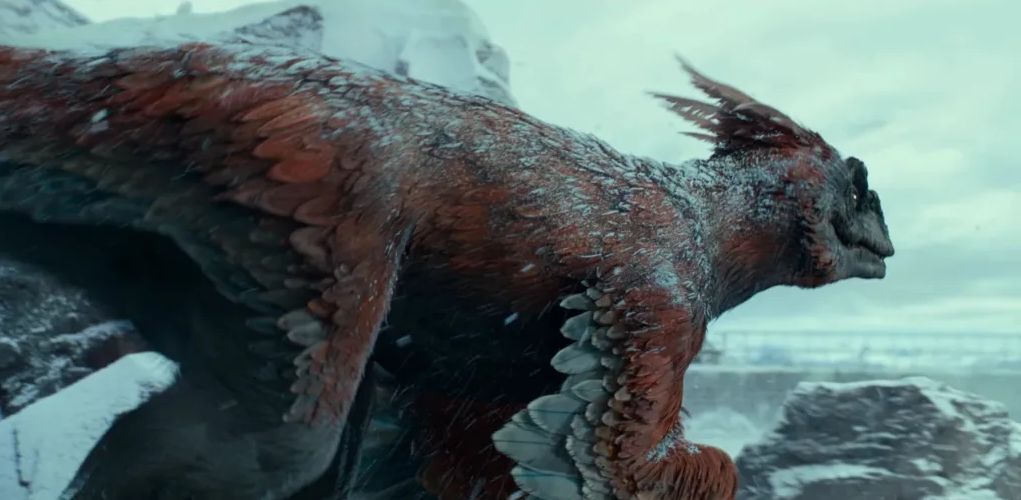
For those that wanted to see some feathers in the franchise, pyroraptor seemed like an exciting opportunity. We see one in Dominion, where hopes for more scientific accuracy went out the window quickly. While the pyroraptor’s encounter with Owen and Kayla was cool, scientists say these creatures would not have been as comfortable swimming as they were depicted here.
4) Ankylosaurus
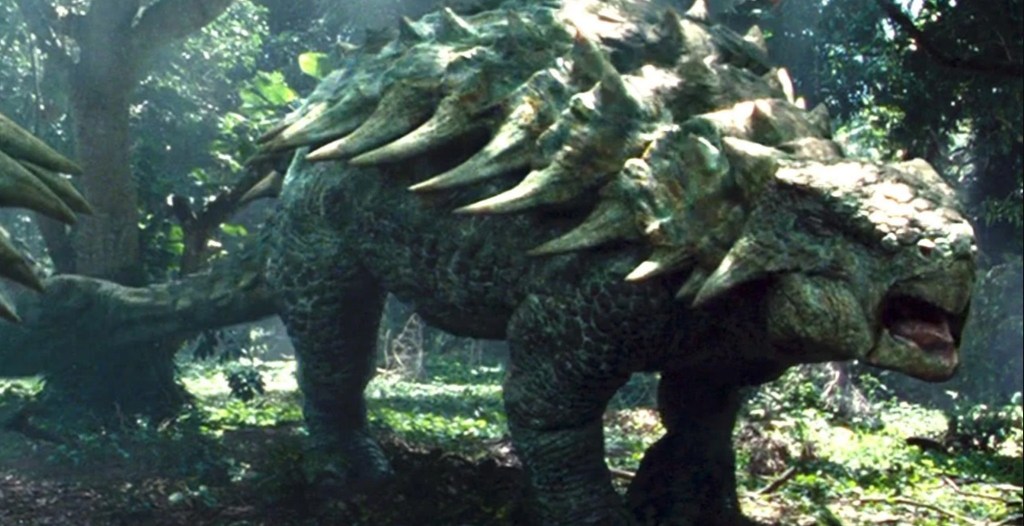
If you came to Jurassic World for the dino fights, you need to have ankylosaurus on your list of favorites. This heavily-armored quadruped is believed to have been a formidable rival to the T-rex in real life, using the many spines along its tail, back and head to wound its opponent while it stayed safe inside its armor. It was cool to see these guys wandering around in Fallen Kingdom, but sadly they didn’t get much to do. Pulling them into the story could add some unique confusion about who is on whose side in a dinosaur clash.
3) Mosasaurus
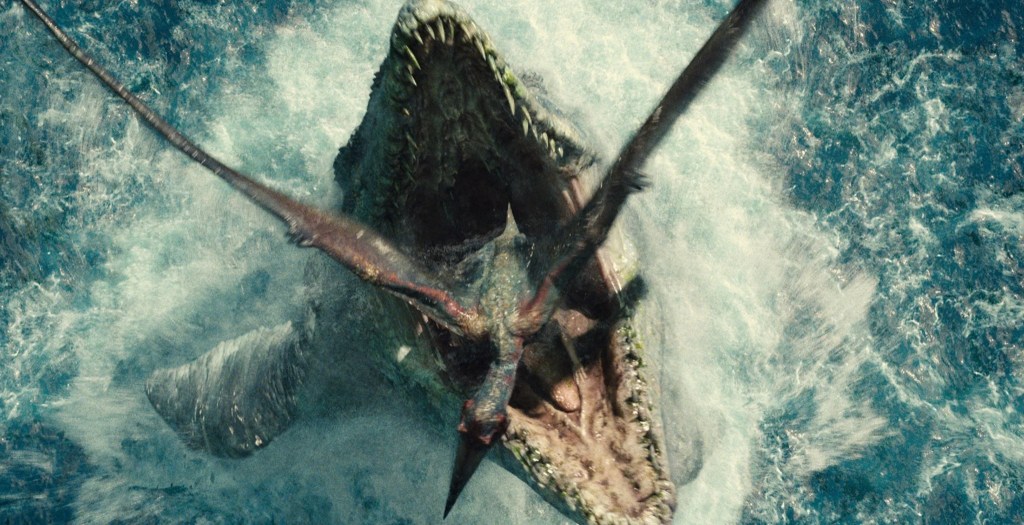
The mosasaurus’ seaside enclosure is an essential set piece in the first two Jurassic World movies, and it featured heavily in the advertising. It definitely lived up to the excitement, giving a fresh perspective of the scale of these monsters and a new sense of terror as it lurked below the surface. It doesn’t make too much sense that the Mosasaurus’ corpse was left floating in its enclosure for anyone to swim up to in Fallen Kingdom, but at least it pulled the sea monster back into the story.
Paleontologists say that the movies’ mosasaurus is probably about twice the size of an average one in real life would have been, which seems acceptable as it can be accounted for by the park’s desire for spectacle and good old-fashioned genetic outliers. Surprisingly, the moment when the mosasaur jumped out of the water to snatch a pteranodon out of the air was also likely accurate, as was the pteranodon’s dive under the surface for prey.
2) Dimorphodon
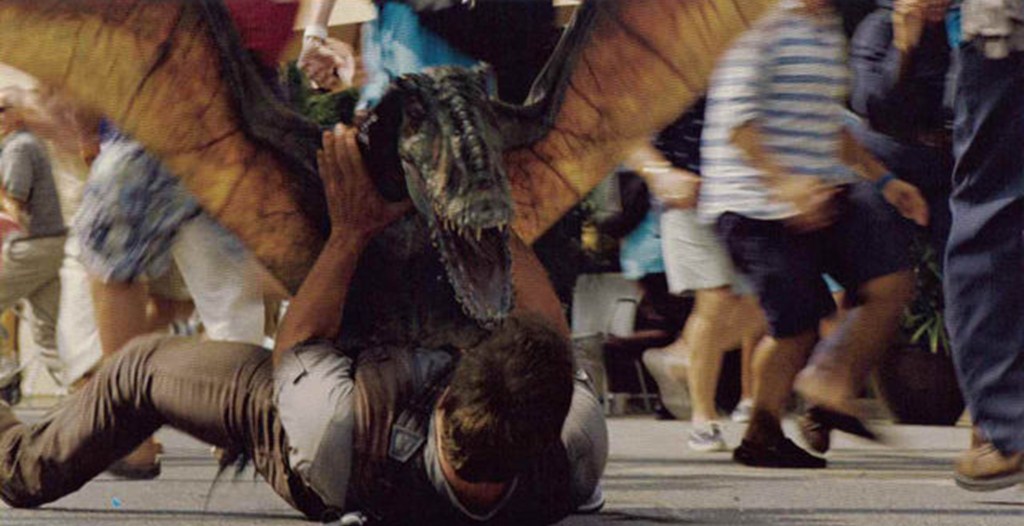
Speaking of pteranodons, they get plenty of screen time in this trilogy but their most terrifying scene is when they team up with their cousins, the smaller dimorphodons. These have heads shaped more like a raptor, and they hunt in packs. You don’t have to imagine how brutal an aerial attack like this would have been — you can see it in the first Jurassic World movie.
Paleontologists have changed their conception of the Dimorphodon a lot over the years, so there are many different appearances for it out there. The filmmakers chose one of the most dramatic depictions, and it may not be all that accurate. Some show the creatures with a more beak-like face and many more feathers than they have in this park.
1) Velociraptor
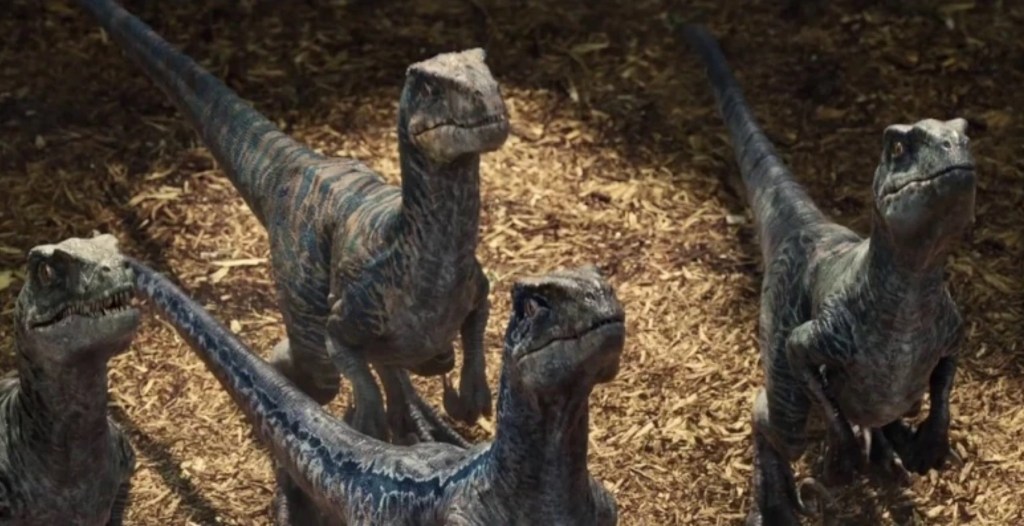
Again, how could this list end with anything but the velociraptors? They came a long way in this franchise from the primary antagonists of the first movie to humanity’s greatest ally in this trilogy, and no matter how little sense it made, it was certainly a cinematic spectacle. The genetically-engineered alternatives to these raptors like the “atrociraptors” almost made the list, but in the end, they all lost out to Owen and Blue, so it just made sense to leave the genuine article in the top spot.
The inaccuracy of the velociraptors in all six of these movies has been very thoroughly explained online — the real ones were about half the height, feathered all over and probably more birdlike than lizard-like. That’s not to say that dinosaurs of this size didn’t exist — the movies’ velociraptors more closely resemble deinonychus, though it was also feathered and birdlike.
At the time of this writing, you can stream Jurassic World on Hulu, Jurassic World: Fallen Kingdom on FuboTV and Jurassic World: Dominion on Starz. Jurassic World Rebirth hits theaters on July 2nd, 2025.

